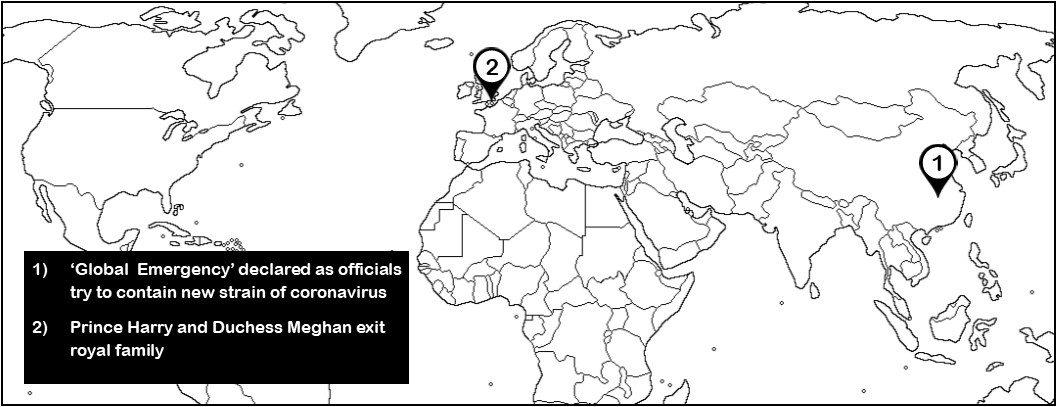‘Global Emergency’ declared as officials try to contain new strain of coronavirus
Dozens of countries now reporting outbreaks of the virus from China
March 2, 2020
With an estimated tens of thousands infected and hundreds more dead, the “Coronavirus,” has become a global concern.
Since it’s first documented case in Wuhan, China, the Coronavirus has been reported in dozens of countries across the globe, including places like the United States, England, France, Australia, and Germany.
Authorities claim the Coronavirus began in Wuhan’s Huanan Seafood and Meat Market, where a multitude of different wild, unorthodox animals (such as snakes, bats, camels, cats, and others) were being sold for human consumption. Scientists believe that the bats being sold there are likely the origin of the virus.
A “Coronavirus” is a common virus often containing non-deadly strains that affect an animal’s respiratory system, leading to nasal/sinus infections and nothing more.
What makes this particular Coronavirus so significant is it’s classification as “novel,” meaning the strains in the virus have not been previously found in humans, and therefore require extensive research to find new treatments.
Li Wenliang, the Chinese doctor who first reported the virus and subsequently was arrested in late December, died on Feb. 7, shortly after contracting the Coronavirus himself. Wenliang, labeled a “hero” by Chinese nationals, had been criticized by China’s government prior to his death.
The World Health Organization (WHO) declared a “Global Emergency” late in January as the epidemic continues to spread across the globe. Travelers have since been advised by the U.S. State Department to avoid trips to China “in an effort to contain the novel Coronavirus.”
In mid-February, the WHO gave the Coronavirus it’s official name: “COVID-19,” short for “Coronavirus Disease 2019.”
Due to global efforts to prevent travel to and from China, the virus has mostly been contained to the Chinese Province of Hubei and its capital Wuhan, where over 50% of the cases have been reported. Over 99% of all confirmed cases have been in China thus far.
The Wuhan Coronavirus is most comparable to the “SARS” illness of the early 2000’s, as the two share the same family of viruses, have identical symptoms, and both originated from China. Eliminating the threat of the SARS virus took scientists almost two years; scientists today hope to eradicate the Coronavirus in a much shorter span of time.
Despite calling the Coronavirus “a very serious public health threat” in a public statement early February, The U.S. Centers for Disease Control (CDC) claimed that the “immediate risk” of the virus was “believed to be low” for residents of the United States.
Additional information on the Coronavirus, including tips on how to stay safe yourself, can be found on the WHO website (who.int), as well as the CDC’s website (cdc.gov).

